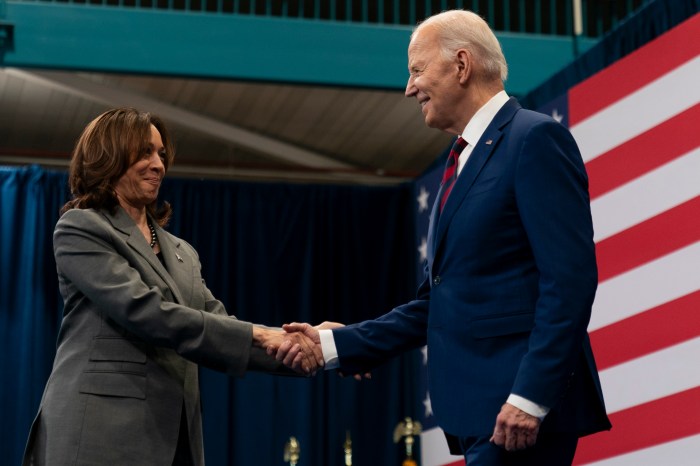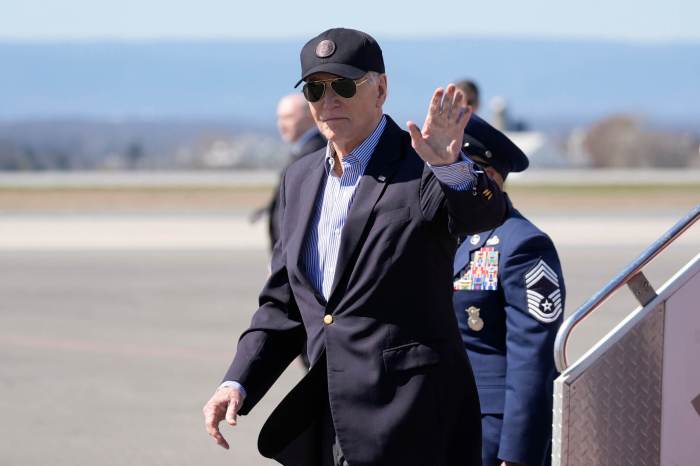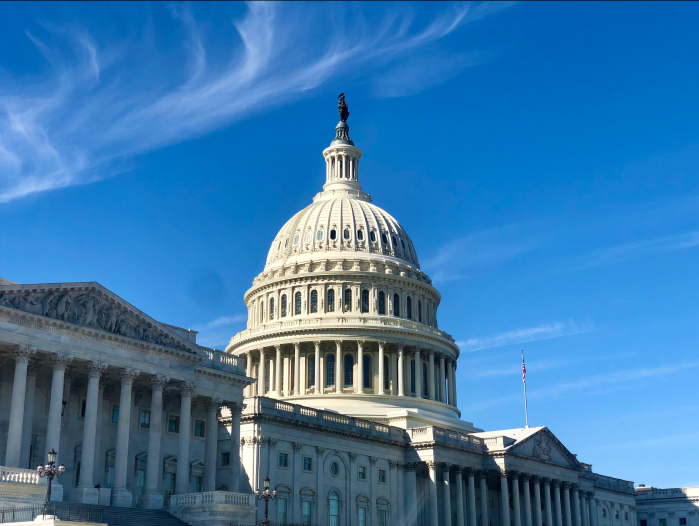BY ANDY HUMM | The NYPD’s practice of stopping and frisking virtually every African-American and Latino youth in the city, many several times annually — there were nearly 700,000 such stops last year alone — was finally protested on a mass scale on Father’s Day, June 17 in a mile-long silent march down Fifth Avenue from Harlem to Mayor Bloomberg’s mansion on 79th Street.
While it was mostly a parade of tens of thousands of black and brown faces stung by racial profiling and the criminalization of their young people, it included multiracial representatives of 60 LGBT groups, if not a mass mobilization of the overall community.
Everyone got into this action. It was led by Ben Jealous of the NAACP, the Reverend Al Sharpton of the National Action Network, Donna Lieberman of the New York Civil Liberties Union, and a host of union, religious, and LGBT leaders. Virtually every candidate for the Democratic nomination for mayor was there, including City Council Speaker Christine Quinn, who has been slow to criticize the tactic and has said she would welcome the continued leadership of Police Commissioner Ray Kelly. The commissioner has stepped up the stop and frisk practice with gusto for a decade and defends it still, along with Bloomberg, though even they are signaling it may be modified and scaled back.
While almost no one would discourage the police from stopping and frisking those genuinely suspected of committing crimes, the overuse of the tactic is defended by the argument that it is applied to those who “fit the description of the suspect” (often simply being a black or Latino young man, without necessarily sharing any other characteristic such as height, weight, or an article of clothing) or who “made furtive movements” (which can mean simply walking, not even running or having a a bulge in their pocket).
The tactic, driven by the need to justify a massive police force, has not been the major means of finding illegal guns used to justify it. Police also use it to get those they stop to take small amounts of marijuana out of their pockets — a tactic virtually never used against white users — leading to misdemeanor charges for “displaying” it, even when the amount involved would not by itself lead to any citation. These arrest records trail these people for the rest of their lives. Bloomberg and Governor Andrew Cuomo have come out for decriminalizing public display of small amounts of marijuana, though the reform was blocked by Republican State Senate Majority Leader Dean Skelos.
City Councilmen Jumaane Williams and Brad Lander have put forth four bills to rein in stop and frisk, but Quinn has yet to take a stand on them — promising only “full legislative review” through a spokesperson. The bills would create an inspector general to monitor the police and conduct independent reviews; explicitly ban profiling on a variety of bases including race, sexual orientation, and gender expression; protect people from unlawful searches; and require cops to identify themselves and explain their reasons for a stop and frisk.
It was hard to find a major LGBT organization that did not endorse the march, and they ranged from the LGBT Community Center to Queers Against Israeli Apartheid, which is barred from meeting at the Center. (This newspaper and this reporter endorsed it.) The whole list can be found under “Partners” at silentmarchnyc.org.
Some LGBT groups turned out just enough people to carry their banners, unable to motivate large numbers of their memberships. But stories in this newspaper and the New York Times prior to the march highlighted the LGBT-black alliance for the march on the heels of the NAACP’s endorsement of marriage equality several weeks before. Leslie Cagan, an out lesbian and the lead organizer of the overall march, said at its conclusion that there were “lots and lots of gay people” scattered throughout it — not just those who gathered at 110th and Lenox in a specifically LGBT contingent.
Jeffrey Campagna — who, with Sharon Stapel of the New York City Anti-Violence Project, chaired the march’s LGBT table organized by Stuart Appelbaum, the out gay president of the Retail, Wholesale and Department Store Union — called the march “a turning point in relations between the [LGBT and African-American civil rights] movements which have long supported each other.”

Veteran gay activist Allen Roskoff of the Jim Owles Liberal Democratic Club, castigating Bloomberg and Kelly, said, “It reminds me of the ‘70s.”
Roseann Hermann of Congregation Beit Simchat Torah, the LGBT synagogue, said that she has always opposed racial profiling, “but now that I have a biracial grandson it matters to me personally more now.”
Tom Burrows of Brooklyn’s Lambda Independent Democrats and a legal aid lawyer said, “I represent these kids every day in South Jamaica” and the stops that lead to marijuana arrests make judges “want to put them into drug programs at 14,” upending their lives.
Joe DeCola, an out gay network news veteran, said, “We are felonizing a whole generation.” America’s war on drugs, he said, is “killing people in Mexico” as well.
Melissa Sklarz, president of the Stonewall Democrats of New York City, which she noted is a “progressive” club, said, “It is important we stand united today.” She added, “I would like to see new police leadership in New York.”

Out gay State Senator Tom Duane, a Chelsea Democrat, marched and talked about the high school civics class he teaches where “kids tell officers what they feel and the cops explain what they are doing.” He said, “Police do what they are told by higher-ups,” so the operating procedures needs to be fixed.
Brad Hoylman, a candidate for the Senate seat Duane announced he is giving up and an ally of Quinn’s, said, “It will take a new mayoral administration to bring significant change.” He supported the Council bill for an inspector general.
Housing Works, the AIDS housing and advocacy group, turned out its usual large numbers of clients and staff, but solidarity with people of color causes is nothing new for the organization, which works primarily with clients drawn from black and brown communities. Charles King, the group’s executive director, said stop and frisk was used especially “against transgender folk and women perceived to be sex workers.” He said abuse of the tactic “drives people away from systems they should trust — and drives them away from care” provided by a government they distrust.
“We’re here because AIDS is driven by social and economic injustice,” King said.
The larger question was why were so many people mobilizing against a tactic that has been used with impunity for so many years. Marchers, both LGBT and non-gay, repeatedly pointed to two February incidents — the profiling of Trayvon Martin, 17, in Florida, killed for walking while black, and the NYPD’s February killing of an innocent and unarmed 18-year-old, Ramarley Graham, in the Bronx. On June 13, police officer Richard Haste was indicted on manslaughter in Graham’s death.
As the marchers gathered on Sunday, Marquis Smalls, 41, an African-American former teacher who lives on the West Side and was there with the Transit Workers Union, talked about the advice he used to offer his students. He taught them both to know their rights and to speak with police with respect.
“Lots of kids don’t speak to each other with respect, and when a policeman stops them, they are often already on edge,” he said. Smalls considers himself “blessed” to never have been stopped and frisked, but said he was racially profiled and stopped while driving right after the infamous police killing of Sean Bell in Queens in 2006.
“We’ve been dealing with police oppression against us since we got off the slave ships,” Smalls said. He said he was encouraged that people were “making common cause” at the march.
“It’s good to see the city united,” said Upper West Side Democratic Assemblywoman Linda Rosenthal, arguing the march expressed “people’s disgust with their mayor. As he’s on his way out, people have come to recognize his destructive policies.”
Buyer’s remorse, I guess.




































